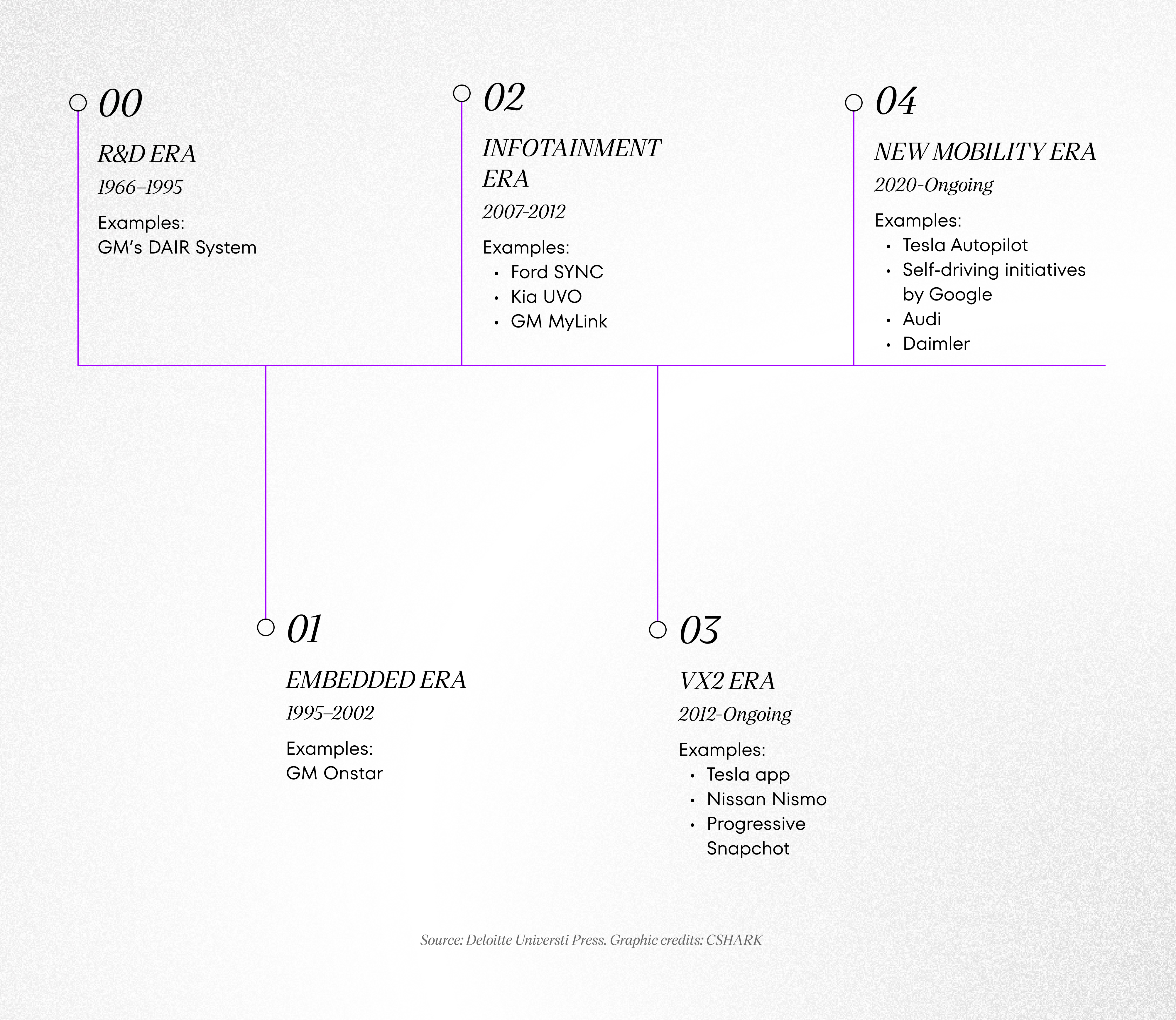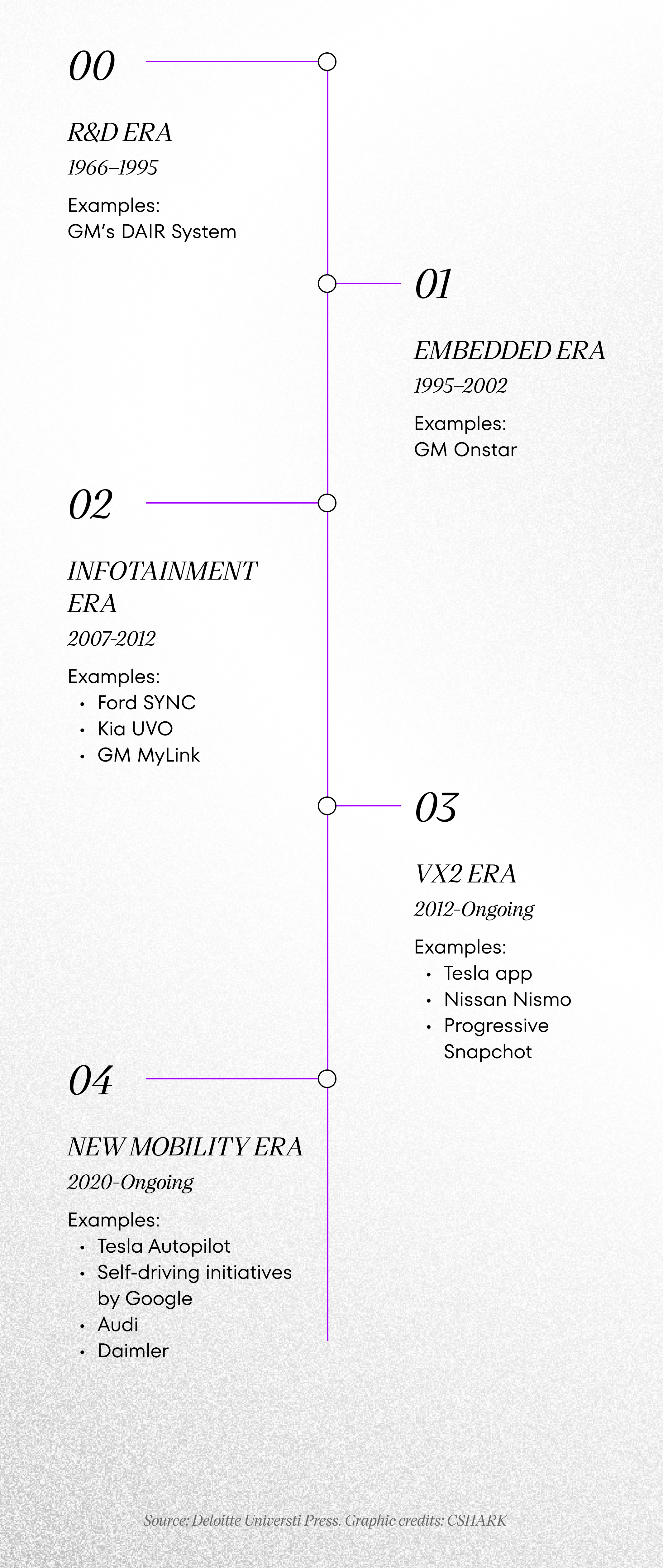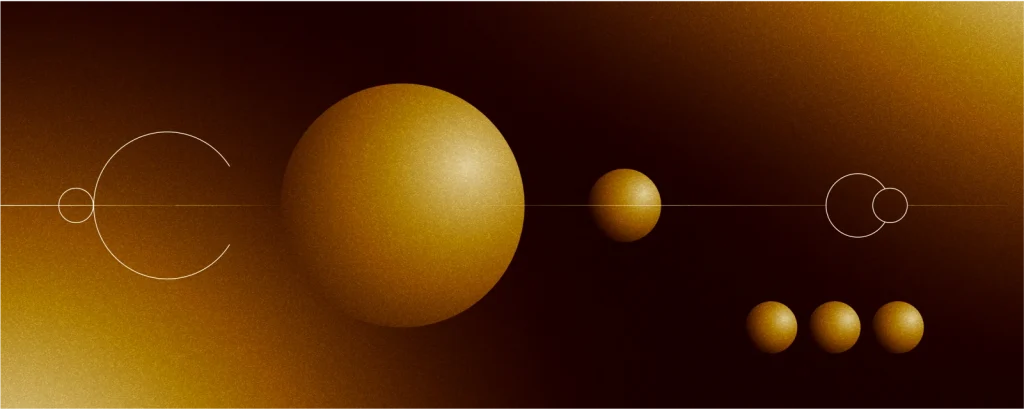May 6th, 2019 | by Piotr Staniek
The Future of Automotive IoT: 5G and Integration

Table of contents
Cars become increasingly software-driven and that means automotive software development challenges. Automotive Internet of Things (IoT) is, at least for the consumers, one of the most visible examples of commercial IoT uses. The era of the connected car goes back even to the 60s but we only recently witness a consumer willingness to pay extra for connectivity options and beyond. The market is growing towards secure-based car sharing with connected fleets and self-driving architecture. With Tesla’s Autopilot and sceptics’ disbelief in between.
The history of IoT
The R&D era of connected cars started in 1966 when General Motors introduced Driver Aid, Information and Routing (DAIR) system. The idea was to provide driver directions, current road conditions, and accident reports. It never got out of the R&D stage because the technology wasn’t advanced enough. For example, the team behind DAIR went for sensors buried in roads, allowing for communicating data. Today we have sensors buried in cars themselves, therefore providing all necessary information on-the-fly.
Then there was Clinton and his famous ‘smoked but didn’t inhale’. Thanks to him, the commercial market was opened for deep inhalation of the GPS technology. With the beginning of civilian use in 1996, General Motors, OnStar, EDS, and Hughes Electronics announced a collaboration on, what was originally described as a digital communication module (DCM). This phone-like tool was supposed to be embedded in every vehicle and transferring information wirelessly to a telematics service provider (TSP) or the car’s manufacturer itself. Back then, the accuracy of the information, its reliability and the ability to contact emergency services were the biggest benefits in the eyes of the consumer. Wait, isn’t that what we’re experiencing today?
No, not entirely. If it doesn’t sound familiar to you it’s because we have learned to not pay attention to these obvious signs of progress. It’s like with smartphones – no one remembers that we can make or take calls with it unless the hardware or grid malfunction happens and we are suddenly cut off from that. What we do pay attention to are entertainment and connectivity options. Topics such as infotainment, car service (the ability to contact manufacturer on-the-go) and additional options like car applications (FordPass, BOOK by Cadillac), dominate modern automotive IoT landscape. The key is and always should be tailored software product development and matching product development services. The mid-2000s and their ubiquity of mobile phones introduced the ‘infotainment’ term to drivers and passengers alike. Today we can’t imagine a car without a healthy dose of electronics. The Blackberry QNX tool and similar solutions from Google and Apple put these companies on the automotive map. There is though still a lot to do but first to decide – Google’s Android Auto or Apple’s CarPlay? Car manufacturers worry they will lose control over their customers’ experience and data, which is what it’s all about.


Warning: Undefined array key “caption” in /var/www/cshark/releases/14/web/app/themes/cshark/template-parts/blocks/image-section/image-section.php on line 37
The next phase is the V2X (vehicle-to-everything) integration. If you’re not familiar with the term, it’s about vehicle-to-vehicle or vehicle-to-infrastructure. It’s all technology that allows vehicles to communicate with parts of the traffic system around them (e.g. traffic lights, highway message boards, and outdoor movable electronic signs). Ford has even launched a series of 25 global experiments to showcase V2X concept and invested big money for various tasks – from testing electric bikes and car-sharing to data-driven health care and insurance, 3D printing and biomimicry. Ford wasn’t the only one; Mercedes-Benz hosted a weekend-long event called Hack with the Best, designed to develop new IoT and wearable concepts for the company’s vehicles.
The future of IoT
With new models of owning a car, new methods of using them and income structures in society, car sharing is what ought to be the preferred model for a lot of people. We will see if this model will become dominant, so far it’s surely getting traction from heavy smartphone users. That means even more options for connectivity – between cars and people.
There is another concept of autonomous driving. Despite getting a lot of traction in the media, the self-driving cars are not that simple to develop. They require multiple systems to work from GPS for navigation and routing, through sensor deployment, lidar embedment to high-powered cameras and lasers. The way to control it – a matching, powerful software. After all, the club without a swing is only a mere stick.
Automotive software development services
Automotive software development services and product development services are things that manufacturers are pushing for really hard. A new car paint or body shape is not enough to stand out on the market. Battle on the software field is for maintaining control over vehicles and user data that gives an edge when it comes to personalize features and elevate user experience. Automotive IoT is heavily dependable on a few variables:
- Infrastructure (that include 5G as well)
- Consumer’s demands and expectations
- Software challenges
- Ideas for differentiating applications (that include in-car and mobile apps) from the competition
It’s not hard to see that 5G and software goes a long way in terms of securing the idea of a ‘connected car’. City infrastructure has to be immaculate to achieve some goals but it’s only half of the equation. The rest is up to manufacturers. Things like integrated AGPS/cellular/Wi-Fi sniffing for an increased level of accuracy will work very effectively but it’s up to automotive giants to implement them. According to Strategy Analytics’ report on IoT in Automotive, “the number of devices connected over the cellular network is set to grow by 12% CAGR between 2018 and 2025 across a variety of industry verticals”. That means more connectivity, security and usability challenges. That means project variations and software iterations. Especially if you’re Tesla, showing newest ‘S’ model for 2019. In late April Tesla showed the fully autonomous vehicle that in following years will drop steering wheel and pedals entirely. Imagine software quality…
Finding the right software partner can be a challenge itself. In order to do that, you have to talk about your software needs and be open about challenges. For more, read our text on how to cooperate with a software house.


